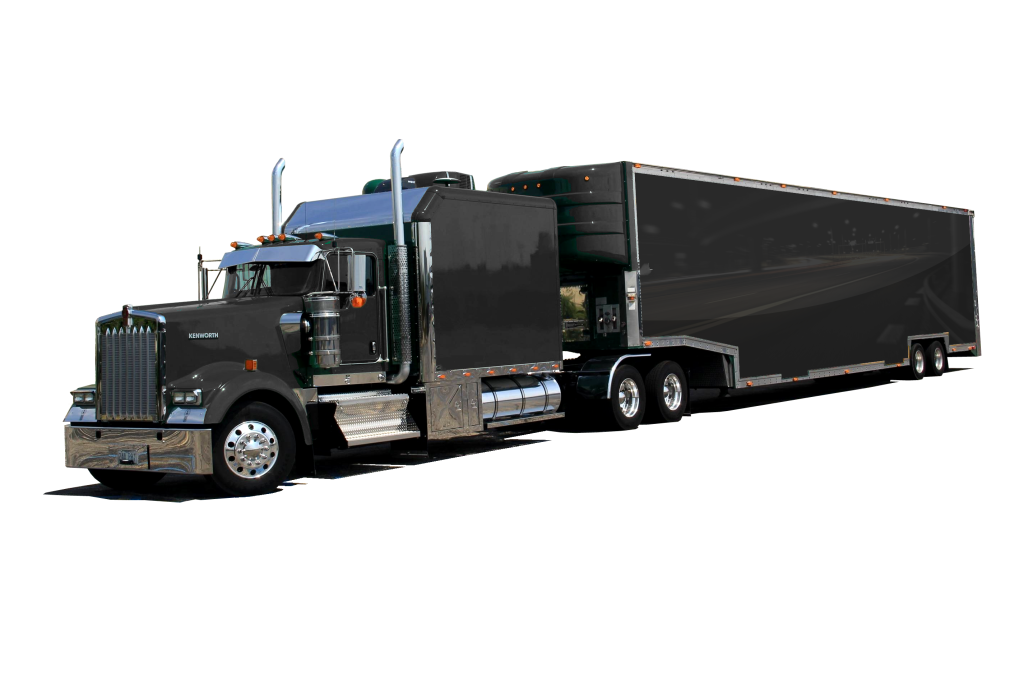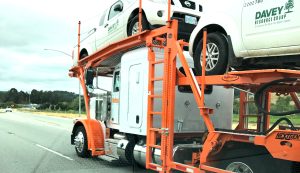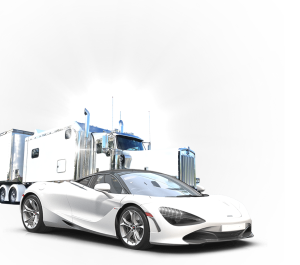Overview Of Vehicle Emissions Regulations In Honolulu
History Of Emissions Standards In Honolulu
The history of emissions standards in Honolulu is a testament to the state’s ongoing efforts to balance environmental stewardship with economic and societal needs. The journey began in the 1970s when the United States federal government first introduced comprehensive air quality regulations through the Clean Air Act. Though these initial federal mandates laid the groundwork, Honolulu ‘s unique geographical and climatic conditions necessitated more tailored approaches.
In the early years, Honolulu primarily adhered to federal guidelines without significant deviations. However, as environmental awareness grew and local concerns about air quality intensified, state authorities began considering additional measures. By the late 1980s, Honolulu had established its own Department of Health Clean Air Branch, which was tasked with monitoring air quality and developing localized strategies for emission reductions. The 1990s marked a pivotal decade as Honolulu started implementing stricter vehicle emissions testing programs.
This period saw the introduction of annual safety checks for vehicles, which included basic emissions tests aimed at identifying gross polluters—vehicles that significantly exceeded acceptable emission levels. These measures were driven by growing evidence linking vehicular emissions to respiratory illnesses and environmental degradation. Entering the new millennium, advancements in technology and a better understanding of pollutants led to more sophisticated testing methods.
The state adopted onboard diagnostic systems (OBD) for newer vehicles, enabling more accurate detection of emission issues. Furthermore, incentives for electric and hybrid vehicles were introduced to encourage cleaner transportation options among residents. In recent years, Honolulu has continued to evolve its emissions standards in response to global climate change imperatives and local sustainability goals. The state’s commitment is underscored by initiatives like adopting California’s stringent Low-Emission Vehicle (LEV) standards and setting ambitious targets for reducing greenhouse gas emissions from transportation sources by promoting electric vehicle adoption.
Current Emissions Testing Requirements
Types Of Vehicles Subject To Emissions Testing
In Honolulu , emissions requirements are designed to ensure that vehicles operate efficiently and contribute minimally to air pollution. These regulations primarily target specific categories of vehicles based on their fuel type, weight, and age. The state’s emissions testing program is focused on identifying high-emitting vehicles and ensuring they meet established environmental standards.
Passenger cars and light-duty trucks are the most common types of vehicles subject to emissions testing in Honolulu . These include sedans, SUVs, vans, and pick-up trucks that typically weigh less than 8,500 pounds. The rationale behind targeting this category is their prevalence on the roads; collectively, they contribute significantly to overall vehicle emissions.
Another crucial category includes medium-duty and heavy-duty trucks. These vehicles often have higher emission rates due to their size and the nature of their usage. In Honolulu , diesel-powered trucks especially fall under scrutiny given that diesel engines traditionally produce more nitrogen oxides (NOx) and particulate matter compared to gasoline engines.
Additionally, older vehicles are more likely to be subjected to stringent emissions tests. As cars age, their emission control systems can deteriorate or fail entirely if not properly maintained. Consequently, regulatory efforts focus on ensuring these older models comply with current standards or undergo necessary repairs.
Electric vehicles (EVs) represent an exception within the scope of Honolulu ‘s emissions testing requirements. Since EVs do not produce tailpipe emissions by virtue of being powered by electricity rather than combustion engines, they are generally exempt from routine emissions checks.
By focusing on these specific categories—passenger cars and light-duty trucks, medium- and heavy-duty trucks, older models—the state aims to mitigate vehicular air pollution effectively while promoting public health and environmental sustainability.
Procedures For Emissions Testing And Certification
In Honolulu , the procedures for emissions testing and certification are designed to ensure that vehicles meet the state’s air quality standards. The process begins with determining whether your vehicle requires an emissions test. Generally, vehicles that are less than five years old or are electric do not require testing. However, older gasoline-powered vehicles typically must undergo periodic inspections. To initiate the emissions testing process, vehicle owners must take their cars to a certified inspection station.
These stations are equipped with specialized equipment to measure pollutants emitted from the vehicle’s exhaust system. The primary focus is on carbon monoxide (CO), hydrocarbons (HC), and nitrogen oxides (NOx), which are common contributors to air pollution. Upon arrival at the inspection station, a certified technician will perform a series of diagnostic tests. These may include an On-Board Diagnostic (OBD) test for newer vehicles or a tailpipe test for older models.
The OBD test involves connecting a scanner to the vehicle’s computer system to check for any fault codes related to emissions control systems. In contrast, the tailpipe test measures exhaust gases directly while the engine is running. If the vehicle passes these tests, it will receive an emissions certification sticker that must be displayed prominently on its windshield. This sticker serves as proof of compliance with state regulations and is necessary for renewing registration with the Honolulu Department of Motor Vehicles (DMV).
Should a vehicle fail the emissions test, owners are given a grace period during which they can make necessary repairs and retest their car without incurring penalties. Many inspection stations also offer repair services or can recommend certified mechanics who specialize in emissions-related repairs.
Penalties For Non-Compliance With Emissions Standards
Penalties for non-compliance with emissions standards in Honolulu are designed to enforce the state’s commitment to maintaining air quality and protecting the environment. These penalties can be significant and serve as a deterrent to ensure that vehicle owners adhere to the established regulations.
Vehicle owners found operating vehicles that do not meet Honolulu ‘s emissions requirements may face various consequences. One immediate repercussion is the failure of the mandatory safety inspection, which includes an assessment of emissions compliance. Without passing this inspection, a vehicle cannot be legally registered or operated on public roads. This results in a situation where the owner must address any emissions-related issues before being allowed back on the road.
In addition to failing safety inspections, non-compliant vehicles may incur fines. These fines can vary depending on the severity of the violation and whether it is a repeat offense. The financial burden imposed by these fines serves as an incentive for vehicle owners to maintain their vehicles properly and ensure they meet all environmental standards.
Moreover, persistent failure to comply with emissions standards could lead to further legal actions, including potential impoundment of the vehicle. In severe cases, especially where there is evidence of tampering with emission control systems or fraudulent reporting, vehicle owners might face even harsher penalties such as criminal charges.
These measures underscore Honolulu ‘s dedication to reducing vehicular pollution and safeguarding its unique ecosystem. By enforcing stringent penalties for non-compliance, Honolulu aims to encourage responsible behavior among drivers and promote cleaner air for all its residents and visitors.
Future Trends And Potential Changes In Honolulu ’S Emissions Regulations
As Honolulu continues to prioritize environmental sustainability and combat climate change, future trends in the state’s emissions regulations for vehicles are likely to evolve significantly. Currently, the focus is on reducing greenhouse gas emissions and promoting cleaner transportation alternatives, but forthcoming changes may introduce more stringent standards and innovative approaches.
One potential trend is the adoption of stricter emissions limits for internal combustion engine vehicles. Honolulu could align its regulations more closely with those of California, which has historically set ambitious targets for reducing vehicular pollution. This alignment would mean tighter controls on nitrogen oxides (NOx), particulate matter (PM), and other pollutants that contribute to poor air quality and adverse health effects.
Additionally, there is a strong push towards electrification of the transportation sector. The state’s commitment to achieving 100% renewable energy by 2045 indicates a future where electric vehicles (EVs) become more prevalent. To support this transition, Honolulu may implement incentives such as tax breaks or rebates for EV purchases while simultaneously phasing out incentives for fossil-fuel-powered vehicles. Infrastructure developments, like expanding EV charging networks across all islands, will be crucial in this shift.
Moreover, advancements in technology could lead to new regulatory frameworks that leverage real-time data collection from vehicles. These smart systems can monitor emissions continuously and ensure compliance with evolving standards. Such innovations not only enhance regulatory efficiency but also provide valuable data that can inform future policy decisions.
In conclusion, as Honolulu advances towards a greener future, expect more rigorous emissions regulations accompanied by robust support for clean energy technologies. These efforts will be integral in meeting the state’s environmental goals while fostering sustainable development within its unique island ecosystem.



